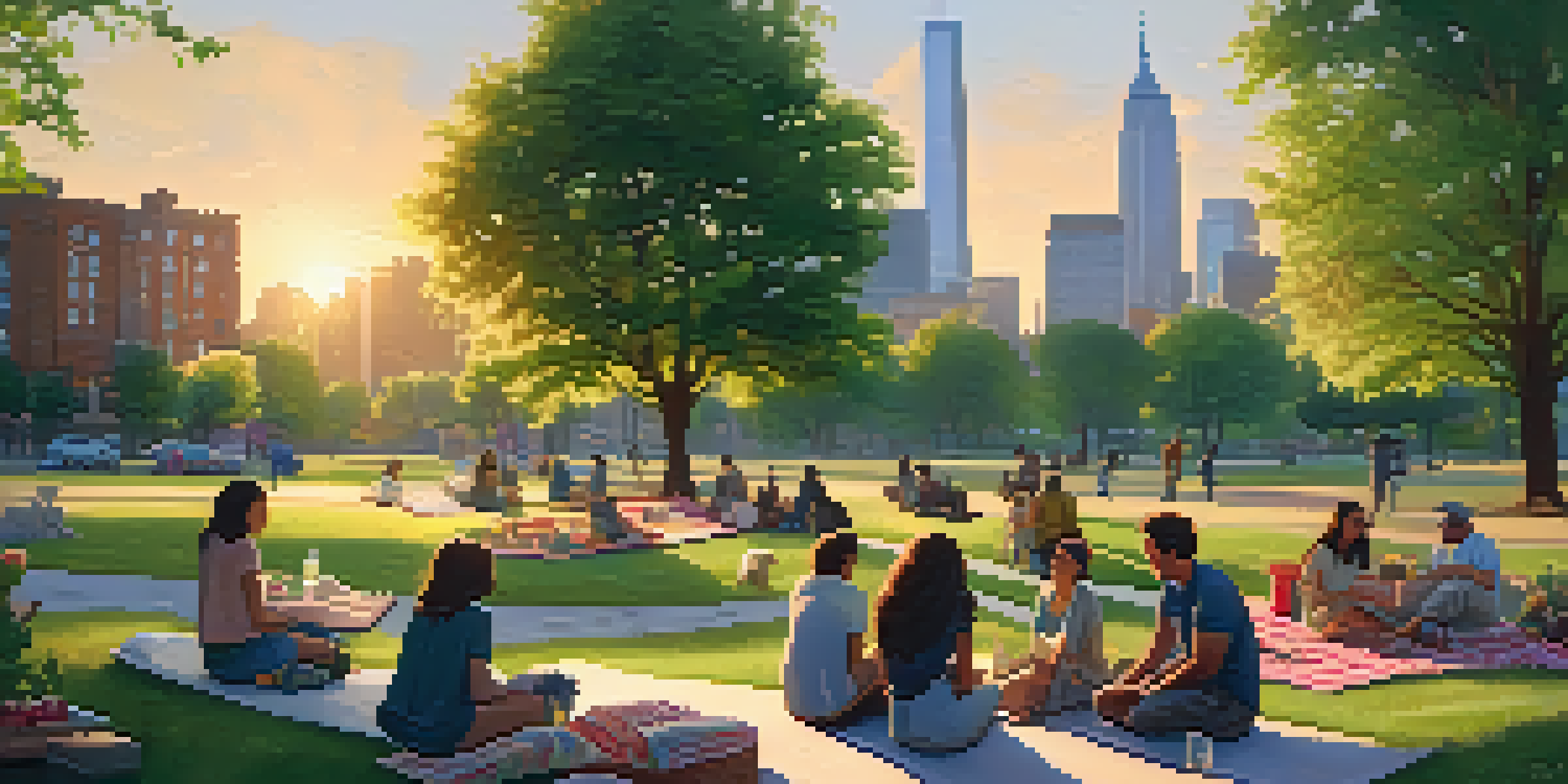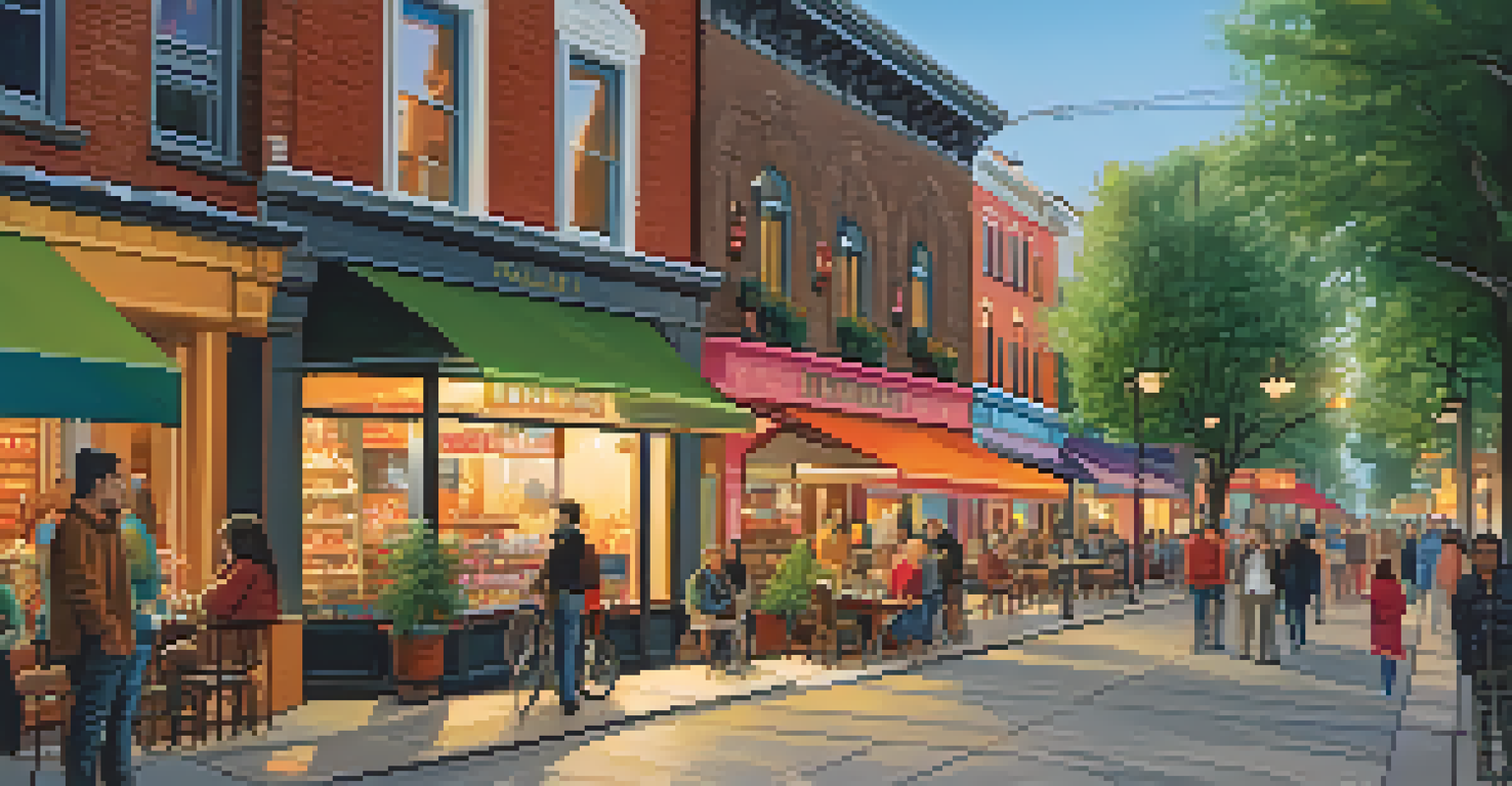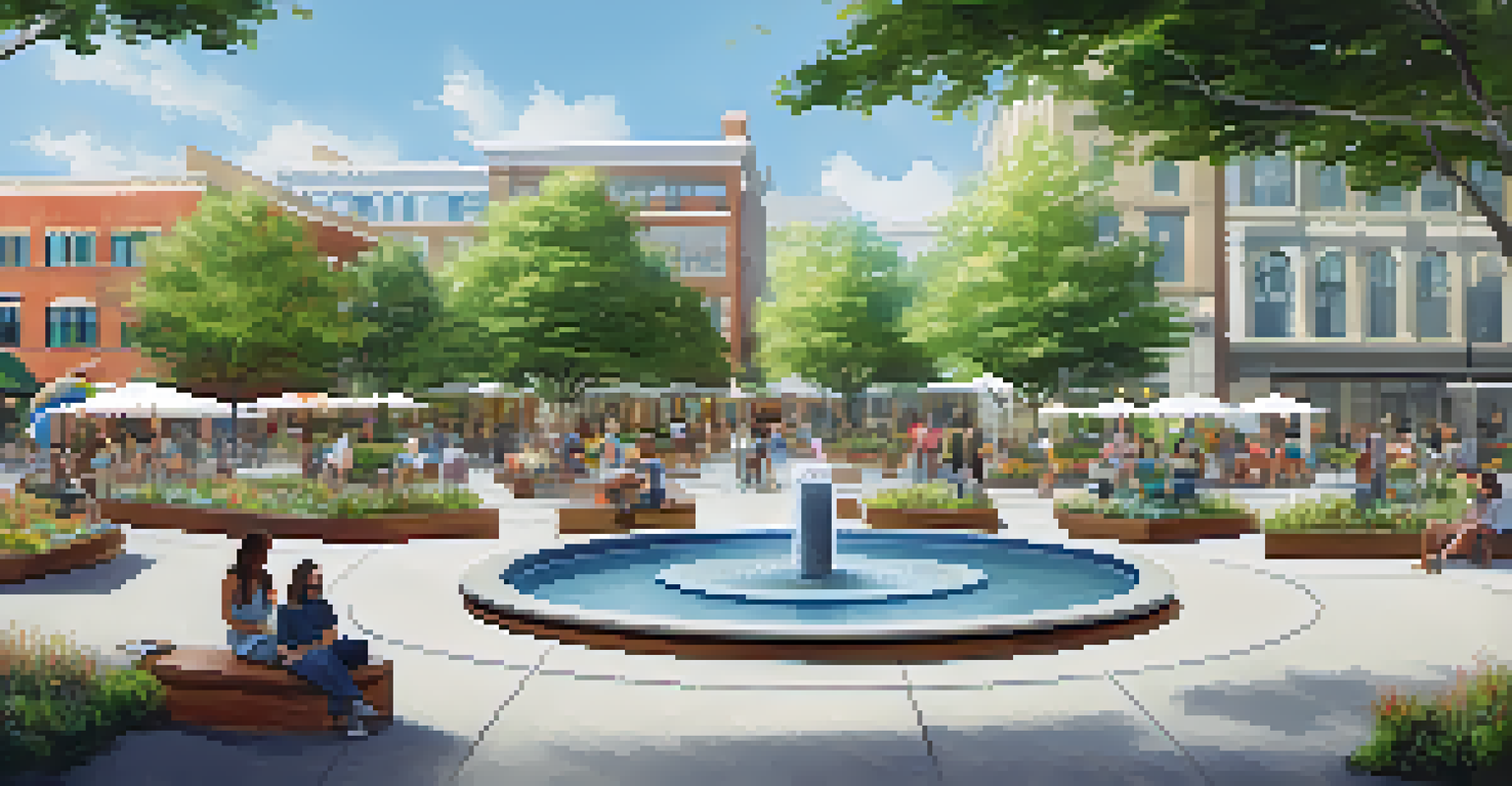Timeless Urban Design: Creating a Cozy City Home

Understanding Timeless Urban Design Principles
Timeless urban design focuses on creating spaces that feel welcoming and functional. It combines aesthetics with practicality, ensuring that city living can be both beautiful and livable. Think of it as creating a warm hug in the bustling heart of the city, where design meets everyday life.
The best way to predict the future is to create it.
These principles often include elements that promote community engagement, sustainability, and accessibility. For instance, designing parks that invite gatherings can create a sense of belonging among residents. Ultimately, timeless urban design encourages places where people want to spend their time.
By embracing these principles, urban designers can create spaces that not only look appealing but also enhance the quality of life. Imagine walking through a neighborhood that feels alive, with greenery, art, and vibrant community spaces that invite you to linger. This is the essence of a cozy city home.
Incorporating Nature in Urban Spaces
Integrating nature into urban design is essential for creating a cozy environment. Urban greenery, such as parks, rooftop gardens, and street trees, brings a refreshing element to the concrete jungle. It’s like having a slice of nature right in your backyard, providing both beauty and a retreat from city life.

Plants not only beautify spaces but also improve air quality and promote mental well-being. Studies have shown that spending time in green spaces can reduce stress and increase feelings of happiness. Imagine sipping coffee in a lush courtyard, surrounded by blooming flowers and chirping birds – that’s the magic of nature in urban design.
Timeless Urban Design Enhances Life
Timeless urban design principles create inviting spaces that promote community engagement and enhance the quality of life.
Additionally, incorporating natural materials into buildings and public spaces can create a sense of warmth and comfort. Using wood, stone, or earth tones can help soften the harsh lines of urban architecture. It’s all about creating a harmonious balance between the built environment and the natural world.
Creating Inviting Public Spaces
Public spaces are the heart of urban areas, serving as gathering spots for community interaction. Designing these spaces with comfort in mind can transform them from mere walkways to vibrant hubs of activity. Picture a plaza filled with cozy seating, art installations, and lively performances – this is what inviting public spaces can do.
Design is not just what it looks like and feels like. Design is how it works.
Elements like benches, shade trees, and interactive features encourage people to spend time outdoors. Creating areas for events, markets, or festivals fosters a sense of community and belonging. When people feel welcomed in these spaces, they are more likely to connect with their neighbors and engage in local culture.
Moreover, thoughtful design can accommodate diverse activities for all ages. Whether it’s a quiet corner for reading, an open area for yoga, or a playground for children, each element plays a role in making public spaces feel inclusive and cozy. It’s about crafting a community where everyone feels at home.
Balancing Functionality and Aesthetics
In urban design, functionality and aesthetics must go hand in hand. A cozy city home should not only look great but also serve its residents’ needs effectively. Consider how a beautifully designed space can enhance daily routines – from navigating narrow streets to finding a quiet spot to relax.
For example, multi-functional furniture in small apartments maximizes space while maintaining style. A fold-out table can serve as a dining area, workspace, or a cozy nook for two. This kind of clever design makes even the smallest city homes feel more spacious and inviting.
Nature Integration for Cozy Spaces
Incorporating greenery and natural materials into urban environments fosters a sense of comfort and well-being.
Incorporating local art and cultural elements can also add character to urban spaces. Murals, sculptures, and design motifs can reflect the community’s identity, creating a sense of pride and ownership. When people see their culture represented, it fosters a deeper connection to their surroundings.
Emphasizing Walkability and Accessibility
Walkability is a key aspect of cozy urban design, making cities more enjoyable to navigate. When neighborhoods are designed for pedestrians rather than cars, they become more inviting and accessible. Imagine strolling through tree-lined streets, with shops and cafes just a few steps away – that’s the charm of a walkable city.
Creating pedestrian-friendly pathways, bike lanes, and public transportation options enhances connectivity. It encourages people to explore their surroundings, fostering a sense of adventure and community. Plus, walkable cities tend to have lower carbon footprints, contributing to environmental sustainability.
Accessibility for all is also crucial in urban design. Ensuring that public spaces, buildings, and transportation are usable by everyone, regardless of ability, creates a more inclusive environment. This consideration helps everyone feel at home in the city, reinforcing the idea that urban spaces belong to all of us.
Utilizing Color and Light for Ambiance
Color and light play pivotal roles in creating the ambiance of urban spaces. Warm colors can evoke feelings of comfort and coziness, while strategic lighting can highlight architectural features and enhance safety. Think of how a well-lit street can transform a city at night, making it feel inviting rather than intimidating.
Incorporating natural light into buildings through large windows and open designs can create bright, airy spaces. This not only enhances mood but also reduces the need for artificial lighting during the day. Imagine waking up to sunlight streaming through your window – it’s a simple yet powerful way to connect with your environment.
Community Engagement Builds Connection
Designing public spaces that encourage interaction helps cultivate a sense of belonging and ownership among residents.
Moreover, playful use of color in public art and decor can uplift the spirit of a neighborhood. Bright murals, colorful benches, and whimsical installations can spark joy and encourage social interaction. A splash of color can turn an ordinary street into a vibrant community canvas.
Fostering Community Engagement Through Design
Community engagement is vital for creating a sense of ownership in urban spaces. Designing areas that encourage interaction, such as community gardens or gathering spots, fosters connections among residents. Think of it as planting the seeds for friendships to grow, all within the comfort of your neighborhood.
Hosting events, workshops, or public discussions in these spaces can further strengthen community bonds. When people come together to share ideas or celebrate local culture, they feel more invested in their surroundings. It’s about creating a lively atmosphere where everyone feels they have a voice.

Incorporating feedback from residents during the design process can lead to spaces that truly reflect the community’s needs and desires. When people see their input valued, it nurtures a sense of belonging. Ultimately, community engagement in urban design results in cozy spaces that feel like home.
The Future of Cozy Urban Living
As cities evolve, the concept of cozy urban living is becoming increasingly relevant. The need for sustainable, welcoming spaces is more crucial than ever. Envision cities where green technologies, cozy designs, and community-focused spaces blend seamlessly for a harmonious living experience.
Innovations like smart city planning and eco-friendly materials are paving the way for a more sustainable urban future. These advancements can enhance both the aesthetic and functional aspects of city living. Picture a future where your cozy city home is not just beautiful but also energy-efficient and environmentally friendly.
Ultimately, the goal is to create cities that nurture well-being and foster connections among residents. By prioritizing timeless urban design principles, we can build cozy environments where everyone can thrive. It’s about crafting a future that feels like home, no matter where you are.